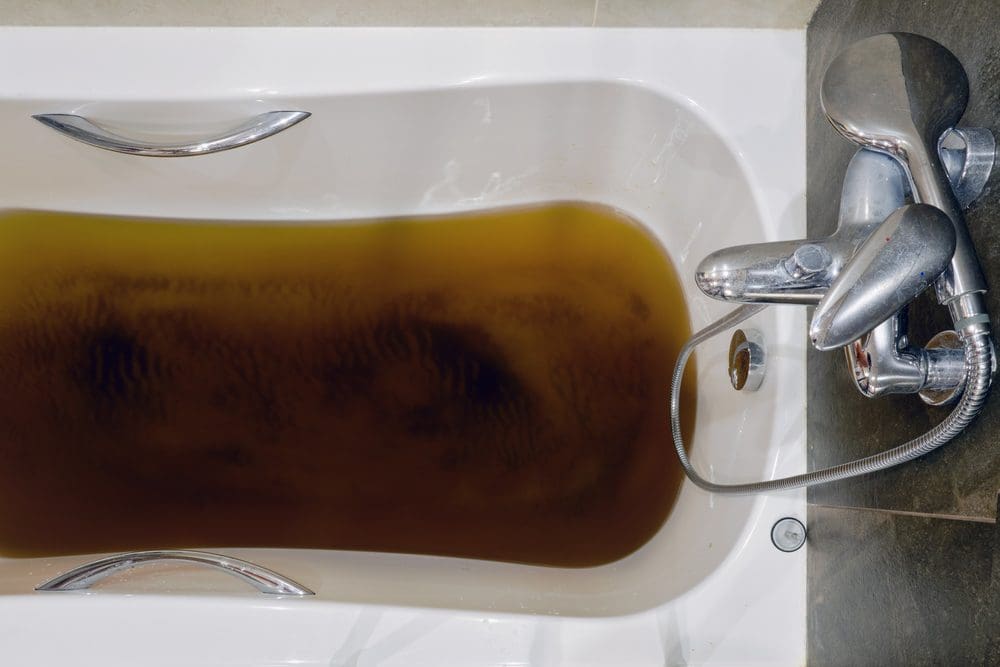They are making a number of good pointers on the subject of Why sewage is coming up through your bathtub as a whole in this content followed below.

Sewer backup in the tub can be a distressing and unhygienic issue for any kind of homeowner. Not just is it inconvenient, yet it also positions significant health dangers and shows underlying issues with the plumbing system. Understanding why sewer is turning up via the tub is vital for taking ideal action to address the issue properly.
Introduction to the Issue
Typical Factors for Sewage Back-up
Clogs in the Drain Line
One of one of the most usual sources of sewer backup is a blockage in the drain line. This can happen because of the accumulation of particles, grease, or foreign items in the pipes, avoiding appropriate circulation and causing sewage to back up right into your bath tub.
Tree Root Breach
Tree origins seeking moisture and nutrients can infiltrate drain lines with small splits or joints. With time, these roots can grow and broaden, creating significant damages to the pipes and causing sewer backup issues.
Understanding the Problem
When sewage draws back up right into the tub, it's a clear indication of a problem with the drain system. The wastewater that ought to be streaming far from your home is rather discovering its back into your space, which can cause significant damage and health hazards.
Prospective Reasons
Several aspects can add to sewer backup in the tub. From clogs in the sewage system line to concerns with the plumbing framework, determining the root cause is necessary for discovering an option.
Aging Framework
Older homes may have dated plumbing systems that are much more prone to deterioration, splits, and wear and tear. As pipelines age, they come to be much more vulnerable to leakages and blockages, boosting the likelihood of sewage backup incidents.
Heavy Rainfall or Flooding
Throughout durations of heavy rainfall or flooding, the drain system might come to be overwhelmed with excess water, causing back-ups and overflows. This can lead to sewage backing up right into tubs and other fixtures inside the home.
Indicators of Sewer Back-up
Foul Odors
Unpleasant smells rising from drains pipes or fixtures, particularly in the washroom, may suggest sewage backup issues. These smells are typically solid and persistent, signifying a problem that requires immediate focus.
Slow Draining Fixtures
Bathtubs, sinks, and commodes that drain pipes slowly or otherwise whatsoever could be experiencing sewer back-up. If multiple fixtures are impacted simultaneously, it's likely that the concern stems from a common point, such as the major sewer line.
Gurgling Sounds
Weird gurgling or gurgling noises originating from drains pipes when water is running somewhere else in your home are a sign of air entraped in the plumbing system. This air build-up can result from sewage back-up and ought to be examined promptly.
Wellness Risks Related To Sewer Back-up
Contamination of Water
Sewer backup can contaminate the water in your home, presenting a major health and wellness risk to you and your family. Exposure to infected water can lead to intestinal issues, skin infections, and various other diseases.
Mold and mildew Growth
Wetness from sewage backup can develop perfect problems for mold growth in your house. Mold and mildew spores can worsen breathing troubles and cause allergic reactions in delicate people, making prompt clean-up necessary.
Spread of Condition
Sewer consists of damaging bacteria, viruses, and parasites that can trigger a range of diseases, including hepatitis, cholera, and gastroenteritis. Entering into contact with sewer or contaminated surfaces puts you in jeopardy of infection.
Tidying up After Sewer Back-up
Sanitation Procedures
Extensively disinfect and sanitize impacted areas after sewer back-up to eliminate harmful check here bacteria and protect against mold and mildew development. Use proper cleansing items and safety gear to ensure safe and efficient clean-up.
Reconstruction of Affected Locations
Fix any damage to floor covering, wall surfaces, or components triggered by sewer backup. Relying on the extent of the damage, you may need to replace carpeting, drywall, or various other products to recover your home to its pre-loss problem.
Immediate Actions to Take
Shutting Off Supply Of Water
In case of sewer back-up, it's vital to turn off the supply of water to prevent additional contamination and damage. Find the major water shutoff valve in your house and shut it off up until the issue can be solved.
Contacting a Professional Plumber
Handling sewage back-up is not a do it yourself job. Call an accredited plumber with experience in dealing with sewage-related problems to evaluate the situation and perform necessary repair work or cleanings.
Avoiding Contact with Infected Water
Up until the sewer backup is settled, stay clear of contact with contaminated water to avoid the spread of germs and pathogens. Wear safety gear if you should remain in the afflicted location and wash your hands thoroughly afterward.
Preventive Measures
Normal Upkeep of Sewage System Lines
Set up routine inspections and upkeep of your sewer lines to identify and deal with prospective problems before they intensify right into major troubles. This can include clearing out particles, examining for tree origin intrusion, and fixing any damaged pipes.
Setting Up Backwater Valves
Consider setting up bayou shutoffs in your plumbing system to stop sewage from flowing back into your home during periods of heavy rainfall or flooding. These shutoffs automatically close when water starts backing up, safeguarding your residential property from contamination.
Proper Disposal of Family Waste
Avoid flushing anything besides toilet tissue and human waste down the commode to prevent obstructions and obstructions in the drain line. Dispose of oil, oil, and various other family chemicals properly to minimize the danger of plumbing problems.
Why is there sewage coming up from my bathtub?
These gas fumes, like hydrogen sulfide – the gas that leaves a rotten egg smell in its wake and is highly flammable and toxic – can be hazardous to your health. Sewage poses major health risks as it contains harmful bacteria and microorganisms that can be dangerous if exposed to them.
Sewage cleanup should be considered an emergency.
So, why is there sewage coming up from your bathroom? There are several common causes of a sewage backup.
The most common reason for sewage coming up through your bathroom is a clogged sewer line. All plumbing in your bathroom connects to a single drain pipe that leads to the sewer line under your house. This drain line carries all wastewater and sewage away from your home to the city’s sewer system.
When the sewer line becomes clogged or blocked, wastewater has nowhere to go but back toward your house. This results in sewage coming up through your drains, often starting with your tub or shower.
Another culprit may be the sewage ejector pump, which is used when a bathroom, laundry room or any other type of plumbing fixture is located below the level of the main sewer or septic line flowing from the house. Most commonly, ejector pumps are used in homes with basement bathrooms or laundry rooms.
When you experience sewage coming up through your bathtub, it’s always best to contact a professional. Attempts to fix a clogged sewer line without experience often lead to more plumbing damage.
Make sure that no one enters the affected area, and open as many windows as possible. Pre-treat the flooded area with small splashes of chlorine bleach. Wear protection gear like rubber gloves, a mask, and water-resistant coveralls.
https://www.shawlocal.com/the-herald-news/sponsored/2022/08/17/omega-plumbing-10199038/

I was shown that editorial on Why sewage is coming up through your bathtub through an associate on our other web address. If you enjoyed our post if you please make sure you remember to share it. Thank-you for your time invested reading it.
Browse Website
Comments on “The Guide to Sewage Emergence in the Bathtub”